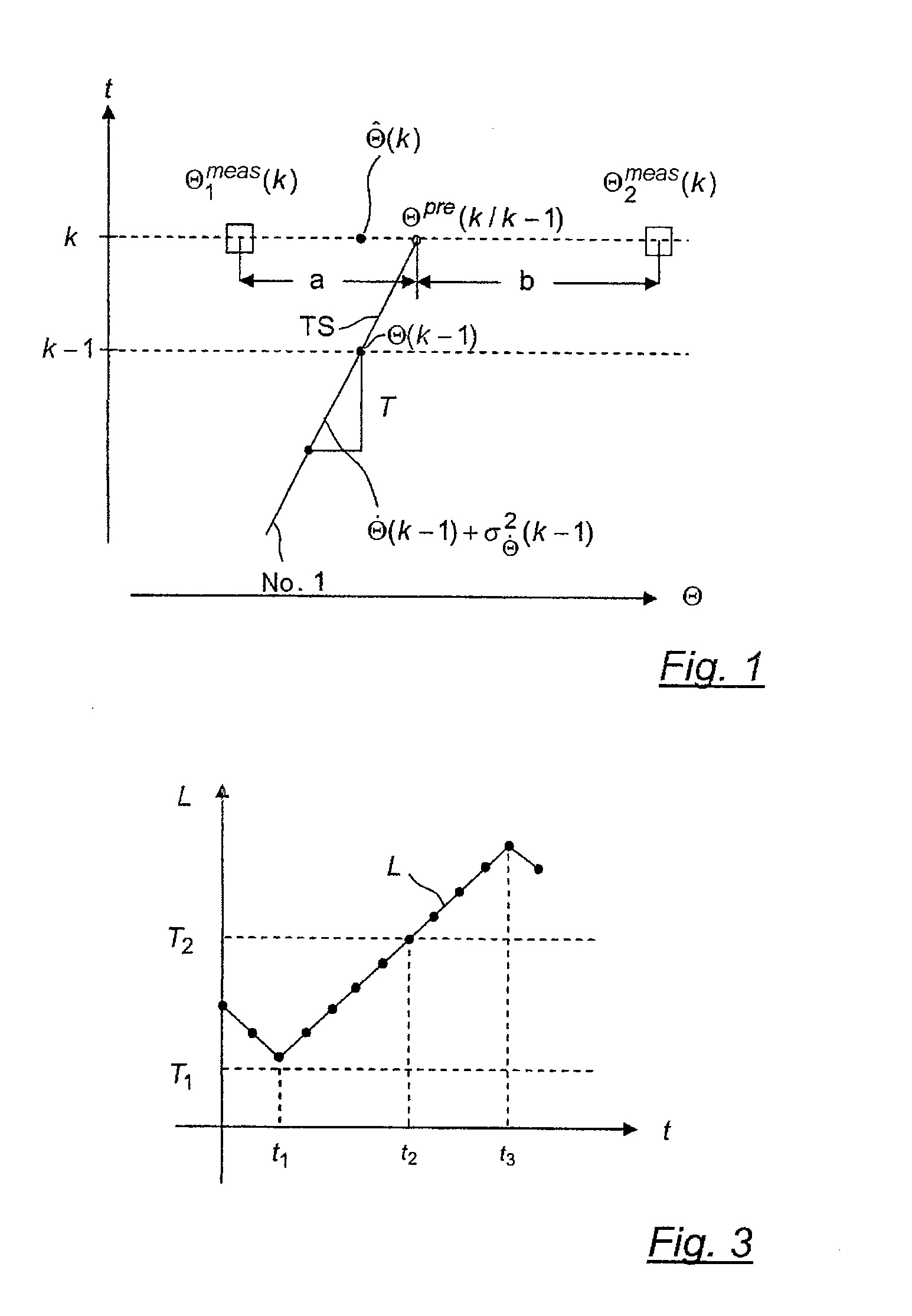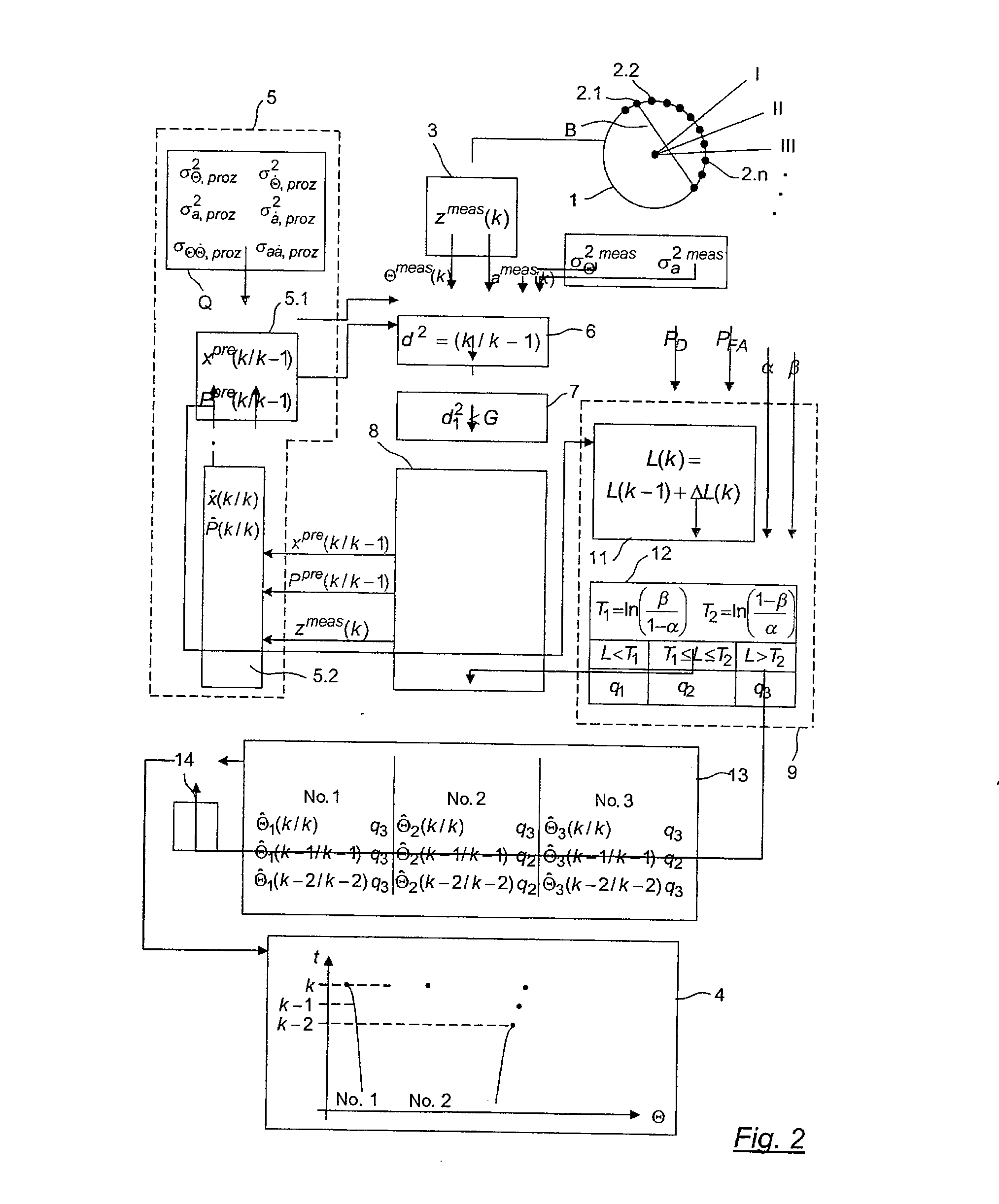Direction-finding method and installation for detection and tracking of successive bearing angles
a direction-finding and tracking technology, applied in direction finders, instruments, measurement devices, etc., can solve the problems of ambient noise loss, decrease in the intensity of array signals, etc., and achieve the effect of less estimation errors, reduced trace quality, and varied confidence of bearing trace displays
- Summary
- Abstract
- Description
- Claims
- Application Information
AI Technical Summary
Benefits of technology
Problems solved by technology
Method used
Image
Examples
Embodiment Construction
[0030]FIG. 1 shows a bearing / time diagram in which the bearing Θ, plotted along the horizontal axis, is shown against time, plotted along the vertical axis. This diagram shows a subelement TS of a bearing trace No. 1, which is estimated up to the time t=k−1 and is obtained by prediction of the bearing angle for the time t=k. For this purpose, starting from a bearing angle Θ(k−1) for the time t=k−1 on the bearing trace No. 1, a bearing angle Θpre(k / k−1) is predicted for the time t=k, based on historical measurement data up to the time t=k−1. The subelement TS has a linear profile over time. The bearing rate or gradient of the bearing trace {dot over (Θ)}(k−1) for the time t=k−1 is determined by regression analysis from the sequence of the associated measurements up to the time t=k−1, using a standard deviation σ{dot over (Θ)}(k−1). The two bearing angles Θ1meas(k) and Θ2meas(k) measured at t=k are tested using the predicted bearing angle Θ1pre(k / k−1) for association in pairs with the...
PUM
 Login to View More
Login to View More Abstract
Description
Claims
Application Information
 Login to View More
Login to View More - R&D
- Intellectual Property
- Life Sciences
- Materials
- Tech Scout
- Unparalleled Data Quality
- Higher Quality Content
- 60% Fewer Hallucinations
Browse by: Latest US Patents, China's latest patents, Technical Efficacy Thesaurus, Application Domain, Technology Topic, Popular Technical Reports.
© 2025 PatSnap. All rights reserved.Legal|Privacy policy|Modern Slavery Act Transparency Statement|Sitemap|About US| Contact US: help@patsnap.com



